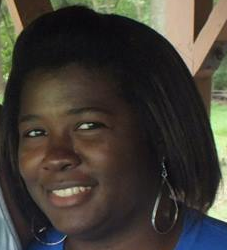In spite of mounting research on how the brain learns, math instruction often falls into the category of “we’ve always done it this way.” Guest blogger Shané Beauford shares her experiences in shifting math instruction . . .
A mother is cooking a ham dinner. She cuts off the end of the ham, places the larger piece in the pan, and begins to roast it. Her young daughter says, “Mommy, why do you cut off the end of the ham?” Mom responds, “You know, I’m not sure but my mother always did that. Go ask Grandma.” The young girl goes into the living room and asks her grandmother the same question. The response is, “I don’t know; my mom did that so I did too,” and she turned to her great-grandmother and asked why. The elderly woman responded, “Well, otherwise it wouldn’t fit in my roasting pan!”
— Dr. Nancy Sulla, Students Taking Charge (pp. 2–3)

Shané Beauford
Math instruction today might be reflected in this humorous anecdote. How has math instruction changed over the years? Thinking back on the math classes I took and when I taught math, the structure of the classes was not that different.
- Students begin bell work or get started
- Teacher reviews the homework from the night before with the whole class
- Teacher presents new lesson to the whole class
- Teacher gives guided practice questions to students, and teacher reviews them with whole class
- Teacher assigns independent practice questions to assess students’ knowledge of the material just learned
- Teacher assigns homework from the section — probably the even questions so that students don’t have access to the answers in the back of the text
How is it, that the teaching and learning of mathematics has looked relatively the same for 50+ years? I was taught using that model, my teacher was taught from that model, so on and on; therefore, the tradition must continue, right? Who will break the cycle?
As I reflected on this anecdote and my own teaching, I began to realize that my students were not all benefiting from this type of instruction. Two main issues emerged: the lack of differentiation and the lack of student buy-in to the content being taught.
When teaching a whole group, I was teaching to the middle. I wasn’t reaching my struggling learners, nor was I pushing the learning of my high-achieving students. Considering this, I made some changes to my math classroom.
First, after gathering some action research data, I no longer reviewed homework as a whole class. Students would group together to review a few questions and I would offer small-group instruction for students who needed extra assistance. I reduced the time I was spending instructing students in whole-group homework review, maximizing the time for teaching new skills, which led to better homework results.
Second, students had been compliant in the learning process, but not actively engaged. It was no wonder that at the start of each school year, I was confused as to why students hadn’t retained the math they learned the previous year. They had no connection to the content; they had not bought into it. What if, in lieu of going section by section through a math text, I engaged students in solving 10 authentic problems throughout the year? In order for them to solve these multi-layered problems, they would need to use varied concepts of mathematics; for example, a unit in which students are asked to create a budget for a trip causes them to need to learn about decimals, measurement conversions, and simple equations. What a change that would be! Students would have a “felt need” to learn (and retain) those math concepts because they connect to something that is real. Students would see the “why” in the math concepts.
Just those two modifications can shift the “how” of math instruction toward higher achievement and better retention.
